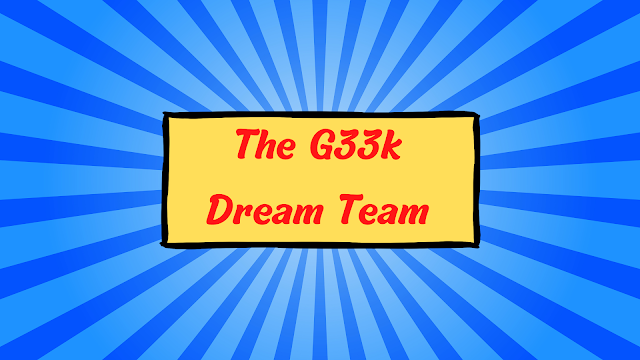Book Notes: The Goal: A Process of Ongoing Improvement By Eli Goldratt and Jeff Cox
The Goal: What is the Goal ?
Before undertaking any major process improvement initiative, the first question to be sure you understand is 'What is the Goal' ?
In the movie City Sliders, old Curly gives out the Secret of Life "Just One Thing". What if I told you there was one secret to success ? - Would you believe it ? - Would you believe Eli Goldratt has figured it out?
No --- ?
Every person.. Every living thing, experiences the same amount of time, the same number of rotations of the earth, the same trips around the sun, and almost everyone asks for more time.
The problem, however has nothing to do with 'not enough' time, and everything to do with not 'doing what should be done', or the way Goldratt defines 'FOCUS'. In fact frequently Goldratt creates some very concise definitions in the book 'The Goal' which are essential to understanding the book, and the theory of constraints.
What really should you work on?
What is the 'one thing' ? Of all the possible 'should' it is immensely important that you pick the correct one. As the main character Alex Rogo discovers, picking the wrong thing (in his case investing in Robots) could be detrimental to his company, and his very job.
Once you know 'The Goal", but before you can answer the question of 'what to work on'. You need to express The Goal according to quantifiable measurements. If your process improvement effort improves on these measurements, thus it must improve 'The Goal' and the effort is successful. If NOT, abandon your effort as soon as possible - before it becomes too late!
The setting for 'The Goal' is a manufacturing plant, Alex is a new plant manager and is under a high pressure situation to improve things FAST or the plant will be shut down. Alex is mentored through the process by 'Jonah' who uses a questioning technique to help Alex arrive at his own conclusions (rather then simply pointing them out directly). The business is called 'Unico'
Unico (like all other business) has just one Goal. It was founded in order to make money ($$). No, The Goal is not a story about the evils of capitalism. It is a simple matter then whether you like it our not money ($$) is required to keep a business going, to pay employees, to pay back the owner, to bring returns to investors. It is not possible to move forward with the book until this fact is simply understood. The business exists to make money
How then do we express this Goal?
While the Goal maybe universal to all for profit business, the specific measurements to determine if an action brings you closer to the Goal can be highly dependent upon the type of business in question. In this book, Unico is a manufacturing business, and The Goal is expressed in three, extremely well defined metrics.
Throughput: the rate at which the system generates money through sales
Inventory: all of the money that the system has invested in purchasing things it intends to sell (eg: parts)
Operating Expense: all of the money the system spends to turn inventory into throughput.
Goldratt's work flies in the face of principles of cost accounting and suggests that measuring productivity and efficiencies from this perspective can be very dangerous and even lead to financial ruin by measuring the wrong things.
Any change, process improvement put into place is productive if and only if it can be shown to increase throughput while simultaneously reducing both inventory and operational expenses.
This allows the organization to focus only on those things that bring the organization closer to its goal and abandon the rest.
How to work on it?
Okay, so let us say you know the 'what'. You have something to work on? - How do you go about 'fixing' it. The process of ongoing improvement works as follows:
- Identify the system’s constraint.
- Decide how to exploit the system’s constraint.
- Subordinate everything else to the above decision.
- Elevate the system’s constraint.
- Warning!!! If in the previous steps a constraint has been broken, go back to step 1, but do not allow inertia to cause a system’s constraint.
The goal discriminates between two 'types' of resources (people, machines, equipment, etc)
A bottleneck resource is any resource whose capacity is less than or equal to the demand placed upon it.
A non-bottleneck resource is any resource whose capacity is greater then its demand.
The 'bottleneck' concept is important here. Think of a bottle of water, as you pour the water out into your mouth, what limits how much flows into your mouth at once..You guessed it the width of bottle's neck. The bigger the whole the more water (in theory) can flow out at once
The bottleneck or 'system constraint' the one thing, that if given additional capacity will increase the flow (the throughput of the system). Once found... It is the one and ONLY thing to focus on.
The single most common mistake when looking at systems, is the assumption that variances will balance out over time (ie: it is okay if a pile of inventory exists in a system, it will eventually even itself out)
The 'Penny' Game which many videos give credit to 'Agile/Scrum' is actually fundamental to the theory of constraints and demonstrates how small batch sizes can be much more efficient then the typical belief of efficiency though large batch sizes (Note: This was shown in 'The Goal' published in 1984 which dates 16 years before Agile/Scrum were even a thing! around the year 2000). The penny flipping is done with matches not pennies with Alex and his scout troop, Ch 13 / ~ Pg 108
The reason that these things do not even out as shown in the above video are due the combination of two things
a) Dependent Events: Eg: Suppose you are building a car. The car depends on parts like the wheels, the engine, the doors, etc. A single car cannot be produced unless all of the parts come together in the final assembly
b) Statistical Fluctuation: At any given time one or more of the building of these parts may slow down or be halted temporarily due to numerous factors, many of which cannot be tightly controlled.
If there were no statistical fluctuation and only dependent events alone would define the process. The single chain of defendant events would be a reliable source of production capacity.
If there were no dependent events and only statistical fluctuation, again the fluctuation can be averaged out an a reliable method determined to calculated demand vs capacity.
Unfortunately, the reality is no such processes exist in the real world which are void of dependent events and/or statistical fluctuation. Therefore these do not simply average out, and in fact a single delay can have a huge impact on final delivery.
Bottlenecks (Constraints) are not bad things!
The maximum capacity of the system = The maximum capacity of the bottleneck (constraint)
Any time lost at a bottleneck = Time lost in the whole system. One hour delay at bottleneck = 1 hour lost in system.
By knowing the constraints, you know where to focus, where to improve.
Being 'idle' is not unproductive - UNLESS IT IS THE BOTTLENECK that is IDLE!!
Time spent trying to improve a non-bottleneck - Is both a waste of time an money and is not productive at all. Yet many times we spend countless hours trying to improve a non-bottleneck in the name of 'process improvement' or 'efficiency'. In fact this can actually move us away from the goal, in particular if the 'efficiency improvement' simply piles more work in front of the bottleneck resource.
Alex discovers this in the story on a camping trip with a scout troop he leads. The effects of statistical fluctuation and dependent events become abundantly clear as the scout group grows with large gaps as they march to there destination. It is only once Alex re-arranges the group such that the bottleneck leads the pack, that everyone is able to maintain a steady pace, and only as they relieve the bottleneck (eg: all of the stuff he is carrying in his backpack) that the entire group can pick up speed and arrive quickly at their destination.
By creating a system of ongoing improvement, showing business how to determine what to focus on, and bring a company closer to its goal - Eli Goldratt brings to the business world, what Albert Einstein brought to the world of physics.
Related Reading:
Here is an interesting article related to co-author Jeff Cox, who also helped other several other business novels: The unsung hero.
TL;DR ? : Here is an audio excerpt I recorded about 'The Goal', bottlenecks, constraints, and automation.











Comments
Post a Comment